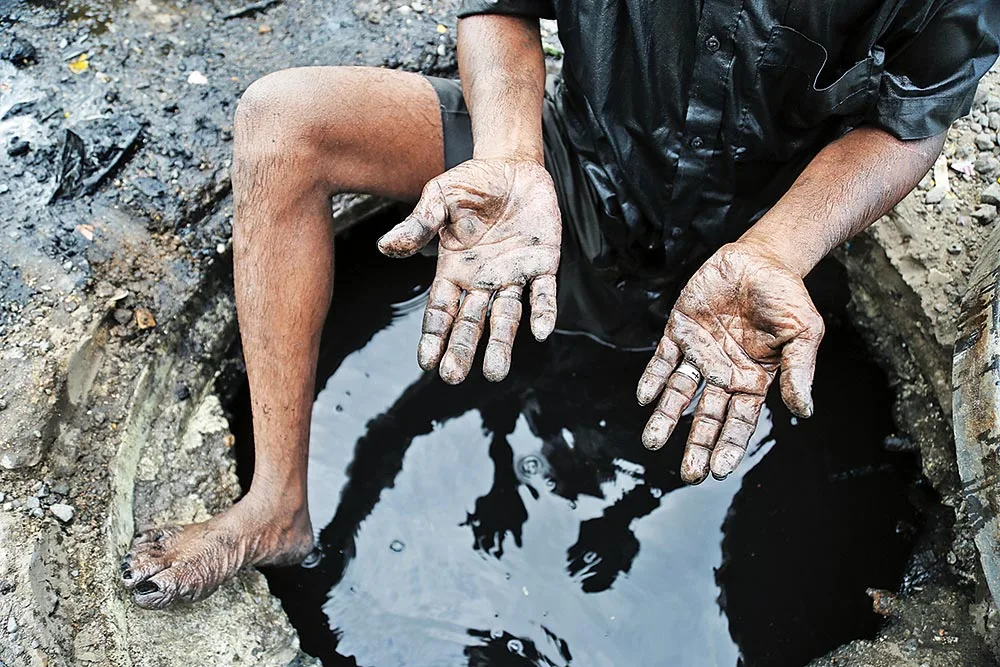SC Directs Union and State governments to Completely Eradicate Manual Scavenging
Manual Scavenging is an act in which a person is engaged in cleaning, carrying, or handling in any manner, human excreta in an insanitary latrine or in an open drain or pit or on a railway track, etc.
- India had approximately 58,098 manual scavengers in 2021, over 75% being women.
- Between 2018-22, 339 died cleaning sewers and septic tanks.
Directions issued under Dr. Balram Singh v. Union of India for effectively implementing Prohibition of Employment as Manual Scavengers and their Rehabilitation Act 2013.

SC’s Directions for Eradicate Manual Scavenging :
Compensation in cases of sewer deaths must be increased to Rs.30 lakhs.
♦ Compensation case of permanent disablement and other forms of disablement is Rs.20 lakhs and Rs. 10 lakhs, respectively.
For rehabilitation of victims and their families, provide scholarships and skill programs.
Prohibition of Employment as Manual Scavengers and their Rehabilitation Act 2013
Prohibit: No person or agency can engage or employ any person for manual scavenging.
♦ However, cleaning excreta with protective gear is not considered manual scavenging.
Violation: of the act is punishable with imprisonment up to 2 years or a fine up to Rs. 1 Lakh or both.
Local authorities must identify manual scavengers, demolish ‘insanitary latrines’, and maintain community sanitary
latrines.
Initiatives for Eradicate Manual Scavenging
- National Action for Mechanized Sanitation Ecosystem (NAMASTE) Swatch Bharat Mission: the word “manhole” was replaced with “machine-hole” in official usage.
- National Safai Karamcharis Finance and Development Corporation (NSKFDC) provides financial assistance at concessional rates for their upliftment.
